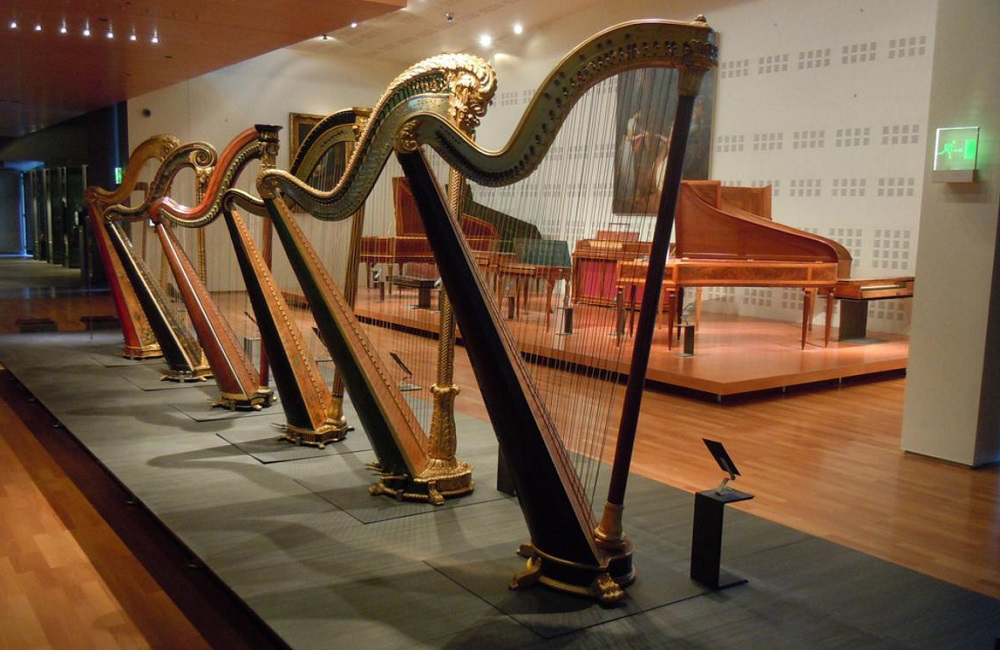The history of music

Music has accompanied humanity throughout its history, playing an important role in culture and society. The history of music spans thousands of years, and its development reflects the evolution of human civilization.
The ancient roots of music
Music probably originated before the advent of writing. Archaeological finds indicate that even in the Paleolithic era, people used simple instruments, such as flutes made of animal bones, to create sounds. The oldest musical instruments discovered by scientists date back to about 40 thousand years BC.
The first musical instruments
The earliest musical instruments, such as flutes, were made of bones and wood. One of the most famous finds is a flute found in the Hohle Fels cave in Germany, made of griffin bone. These instruments were used to play simple melodies and may have served ritual purposes.
Music in Ancient Civilizations
As the first civilizations developed, music became more complex and varied. In Ancient Egypt, music played an important role in religious ceremonies and everyday life. The Egyptians used harps, lutes, and sistra, creating rich and varied musical compositions.
In Mesopotamia, one of the cradles of civilization, musical instruments included lyres and flutes. Music was used in temples and palaces, accompanying religious rituals and ceremonial events.

Ancient Music
In Ancient Greece, music was considered an important part of education and culture. The Greeks developed the theoretical foundations of music, including harmony and rhythm. Music accompanied poetry and theatrical performances, and also played an important role in religious ceremonies.
The Romans, having adopted the musical traditions of the Greeks, also attached great importance to music in their culture. They used musical instruments such as the water organ and the cithara in a variety of public and private events.
Medieval Music
With the fall of the Roman Empire, musical traditions did not disappear, but were transformed. During the Middle Ages, music gained importance in the Christian church. Gregorian chant, one of the most famous pieces of music from this period, was used in the liturgy and became the basis for the further development of the Western musical tradition.
Secular music also developed during the Middle Ages. Minstrels and troubadours created and performed songs telling stories of chivalry, love, and heroic deeds.
Renaissance and Baroque
The Renaissance period (14th-17th centuries) was a time of flourishing music. Composers began experimenting with polyphony, creating complex musical works for voice and instruments. Famous composers of this period, such as Giovanni Pierluigi da Palestrina and Joseph Haydn, made significant contributions to the development of musical art.
The Baroque period (17th-18th centuries) was characterized by the development of opera, orchestral music, and harpsichord works. Johann Sebastian Bach and George Frideric Handel were outstanding representatives of this period, whose works are still performed today.
Classical and Romantic Music
The Classical period (18th-19th centuries) was marked by the work of such geniuses as Wolfgang Amadeus Mozart and Ludwig van Beethoven. The music of this time was characterized by clarity, structure, and harmony.
The Romantic period (19th century) brought emotion and individuality to music. Composers such as Frederic Chopin and Pyotr Ilyich Tchaikovsky created works that reflected deep personal experiences and emotions.
Modern Music
The 20th century was a time of great changes in music. The development of technology allowed the creation of new musical instruments and genres. Jazz, rock and roll, pop, and electronic music became important elements of the cultural landscape. Composers and performers such as Miles Davis, Elvis Presley, The Beatles and Michael Jackson became icons of their era.
The history of music is the history of humanity. From simple melodies played on bone flutes to complex symphonies and modern hits, music has always been and remains an important part of our culture and everyday life. It has evolved with us, reflecting changes in society and technology, while remaining a constant source of inspiration and joy.
